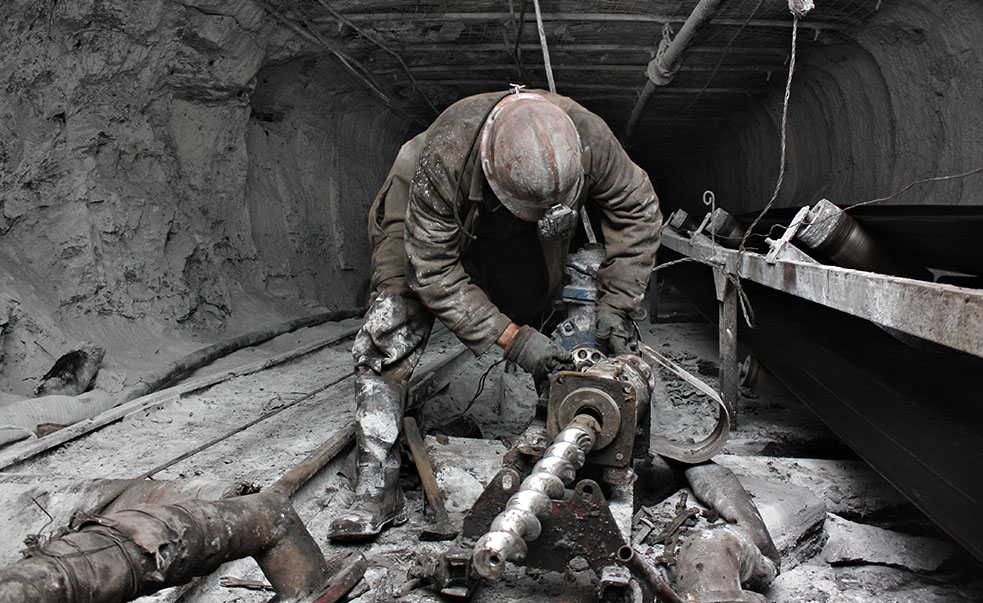The acceleration of new technologies is transforming the way a range of industries operate. In particular, there has never been a greater need for digitalization within the coal sector, as mining operators juggle the necessity for profitability versus the requirement to drastically reduce running costs, heighten efficiency and improve safety performance. With mines growing deeper underground, it is also becoming abundantly clear that technology will play a huge part, both now and in the future.
Mining technology has improved immensely over time, but the machinery, devices and vehicles used still make it a very hazardous business. As a result, increasing numbers of next-generation technologies such as sensors, automated or self-controlled equipment, and data-heavy automation solutions are being adopted to allow for smoother and more efficient mining operations. However, all of this requires reliable, high-bandwidth connectivity to manage the large amounts of data necessary for the successful daily running of a mine.
Dig a little deeper
High-bandwidth, and robust networks are imperative for the mission-critical communications that take place within the mine—both above and below ground. Fibre optic networks are just one enabler of the flexible and high-bandwidth communications demanded by the mining industry and provide the essential connectivity. However, installing fibre in active drives, panels, and declines can often be difficult to schedule and can create operational and maintenance nightmares.
Underground mines are also some of the most challenging places to deploy fibre, due to their harsh climatic and operational nature. Deploying and maintaining wired connectivity is expensive too, with fibre networks needing a great deal of care and management. It is also not uncommon for trucks to accidentally catch and rip down fibre sections, potentially resulting in complete connectivity loss across the entire underground mine.
With mines reliant on their communication infrastructure for essential safety systems and the critical link between operations underground and those working on the surface, network failure is not an option. Any outages or failures can result in downtime, the costs of which scale rapidly with duration. In order to avoid this, it is vital that companies adopt high-performance, high-quality and long-life solutions that enable seamless underground connectivity.
Automated operations
Deploying automatic equipment for drilling and haulage, mines achieve production gains without an operator’s presence. Equally, this contributes to avoiding worker fatigue, which can, in turn, mitigate safety risks. The use of autonomous assets in the mine’s riskiest sections reduces the number of people working in dangerous areas by more than 50%, significantly contributing to personnel safety. This is extremely beneficial, as the International Labour Organisation (ILO) notes, that while mining only employs around 1% of the global labour force, it generates 8% of the world’s fatal accidents.
While losing connectivity in an emergency can be disastrous in terms of safety, security, and productivity levels, the rapid increase in mining technology has created an even larger need for ‘always-on’ connectivity. Autonomous applications and connected devices need to consume and transmit large volumes of data continuously and critically with low-latency, in order to function efficiently or at all. This is not only bandwidth-intensive and delay sensitive, but there must be no single points of failure or dropouts that will interrupt the flow of information between data centers and operational assets. The challenge for operators with autonomous technologies is maintaining connectivity to all connected devices.
Data is set to become the lifeblood of successful mines, meaning that the ability to store and receive data messages is critical to delivering real-time visibility of personnel and assets. However, a mine’s capability to capture and act on its equipment data will rely solely on its network infrastructure. Therefore, operators must select a wireless network that can rise to the demands of data-driven mining applications, including the ability to provide scalable bandwidth, signal resilience, and mission-critical mobile connectivity.
A solution is at hand
Mines are constantly seeking ways to minimize worker exposure in their highly hazardous environments and to do so, they require a network which can move with its rigorous operations. Some mining operators are installing flexible ‘mesh’ networks. These consist of devices that can transmit and receive data autonomously (known as nodes) being fitted to machines and people in a network comprised of hundreds of similar devices that can all communicate directly with each other.
Rajant’s wireless Kinetic Mesh® network is built specifically to suit the mining industry’s characteristics, as it provides highly mobile connections in industrial environments. Through its robustness and mobility, Kinetic Mesh can provide unwavering connection in the adverse and changing conditions typical of the underground mining industry, and therefore deliver reliable communication for operators.
Rajant BreadCrumb® nodes work via multiple frequency peer to peer connections and can be fixed or mobile. For example, connections can be made between moving assets, such as trucks or people, enabling all-to-all communications between mobile equipment. Every node in a Kinetic Mesh network can act independently and with full routing capabilities. They can receive and transmit data simultaneously, meaning they can be receiving information from any another connected device. Additionally, whilst providing this resilient mesh network connectivity, Rajant Breadcrumbs can also simultaneously act as a local Wi-Fi transmitter. This critical functionality allows the adoption of real-time location solutions for tracking and tagging machinery and personnel.
This ubiquitous connectivity and flexibility of applications is made possible through Rajant InstaMesh® networking protocol, which dynamically and automatically selects the fastest route for traffic and re-routes communications to the next best path if the first becomes blocked or unavailable. Downtime is avoided to ensure underground mining’s subterranean conditions will not compromise network performance.
Connectivity in action
Being able to reliably transmit and receive data from autonomous or remotely controlled assets provides two benefits. First, staff above ground can capture and analyse real-time operational data. Second, autonomous vehicles can perform tasks without humans present in difficult and dangerous locations. In these expansive and hazardous environments, it is vital that the network be able to reach every corner of the mine and adapt with miners’ movements to provide constant, uninterrupted communications between miners and their support teams, ensuring fast, timely responses, especially in emergencies.
To provide an example of Rajant Kinetic Mesh wireless networks in action, Rajant and Hitachi Construction Machinery Australia are improving operational safety and productivity through the use of autonomous haulage systems in an Australian coal mine. Hitachi selected Rajant Kinetic Mesh because it is the only industrial wireless network enabling vehicle-to-vehicle (V2V) communication, allowing autonomous vehicles to talk directly to each other, providing enhanced coverage and reliability.
There are currently six autonomous haul trucks active in production areas of Hitachi’s Australian coal mine deployment, scaling to over 45 next year utilising Rajant communications. The mine’s existing Rajant wireless network was deployed across many mobile and fixed infrastructure that easily met the requirements to support and enable Hitachi’s autonomous operations. Hitachi has experienced and witnessed Rajant’s networks dynamically adapting to evolving conditions and making multiple connections over multiple frequencies per node for continuous connectivity.
At the coalface of change
A report by the World Economic Forum and Accenture, forecasts that by 2025 digitalization will have added more than US $425 billion of value to the mining industry, with around 1,000 lives saved and 44,000 injuries prevented. As such, the sector will rely more and more on next-generation technology as it increasingly demands higher efficiency and profits. With so much riding on their networks, it is essential that companies take advantage of wireless mesh networks that are simple, risk-free and cost-effective. By utilizing wireless mesh technology it will help upgrade and improve performance within the mine while offering easy adaptability and expansion for future requirements.
Miners can be confident that they will receive invaluable data in real-time, which will empower them to make well-informed decisions for the future. Not only this, but with the right network in place, mines will be able to embrace autonomy and provide the safety-enhancing and productivity-increasing applications that every modern mine demands. 🖉












